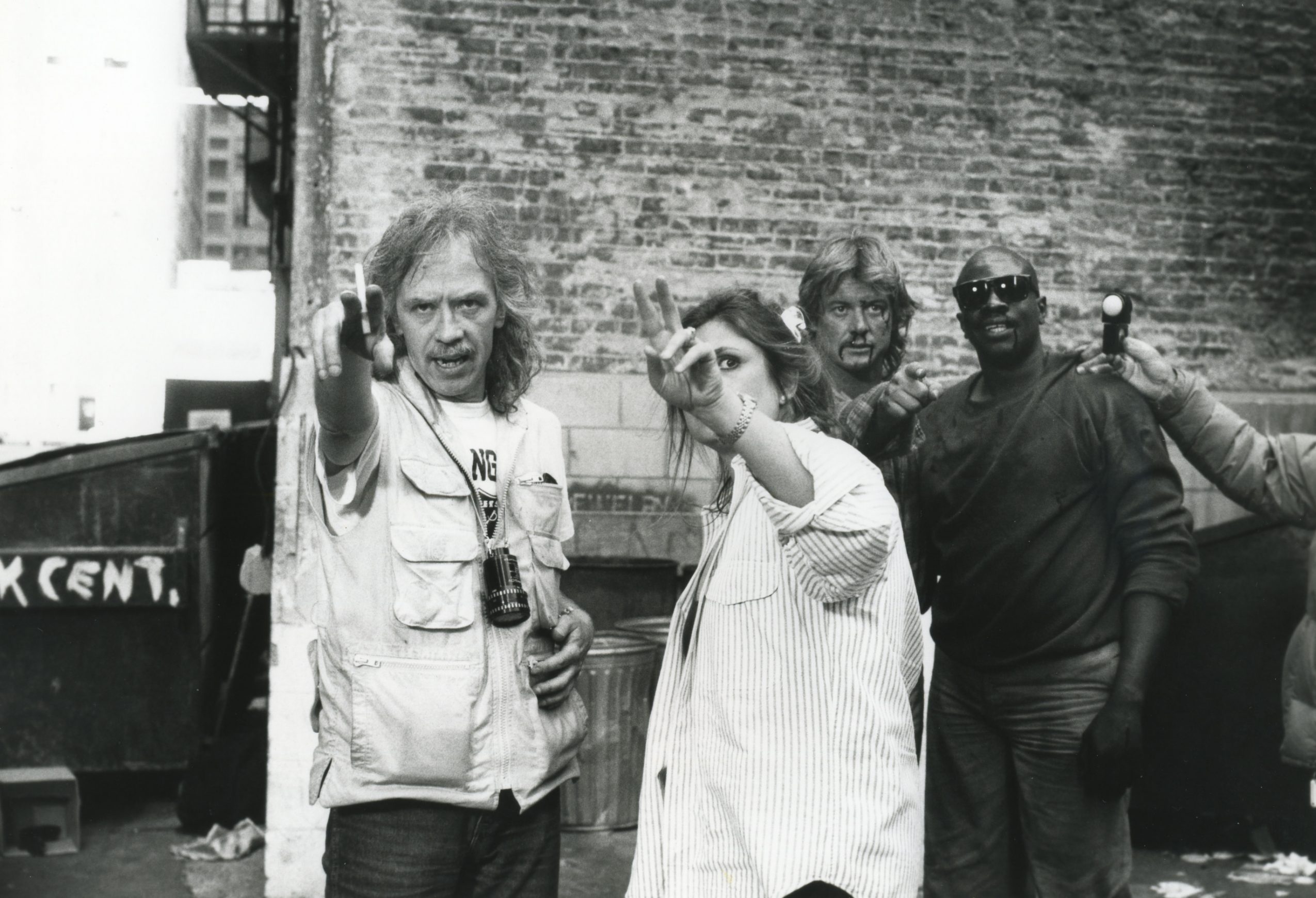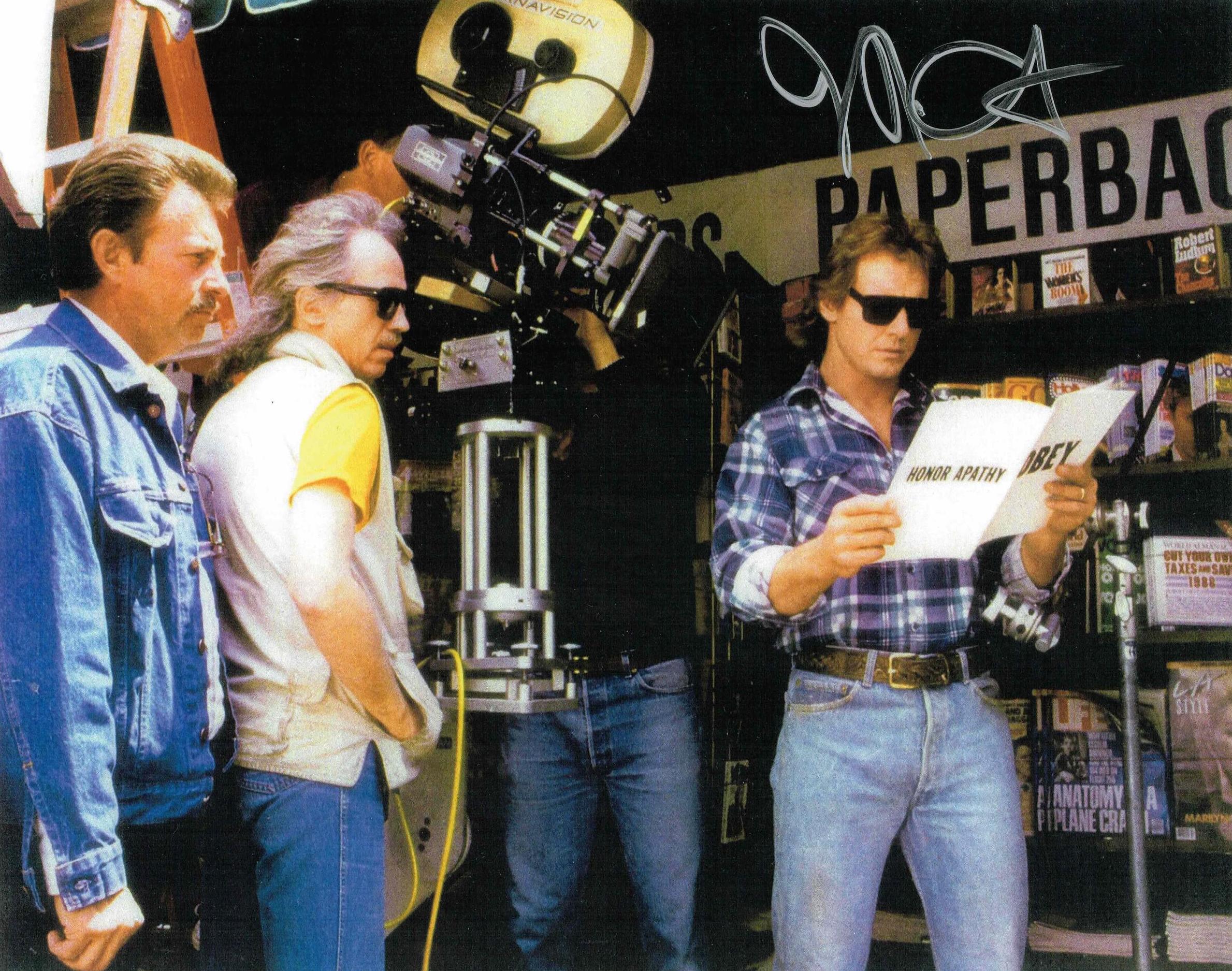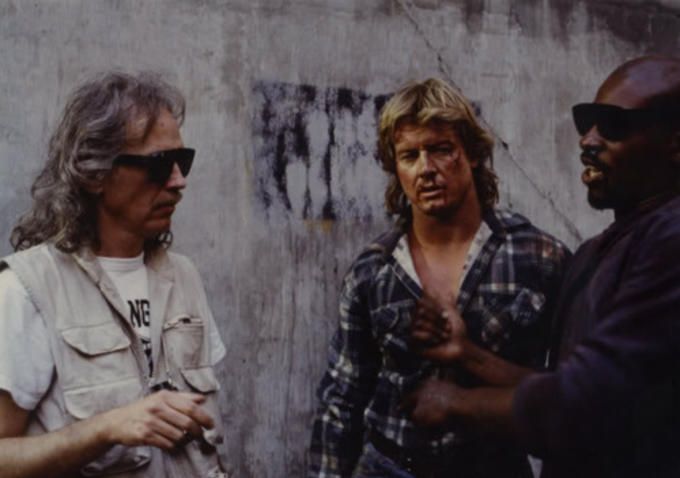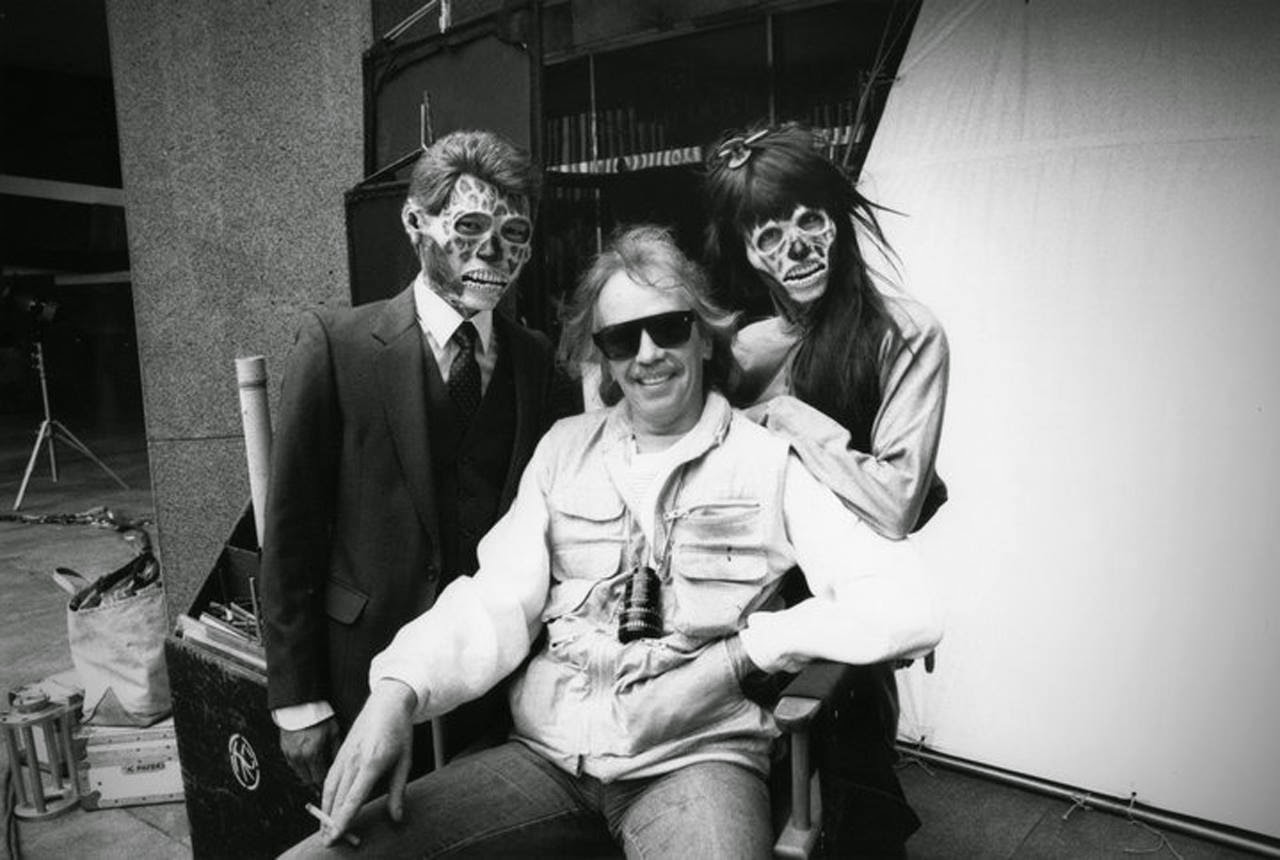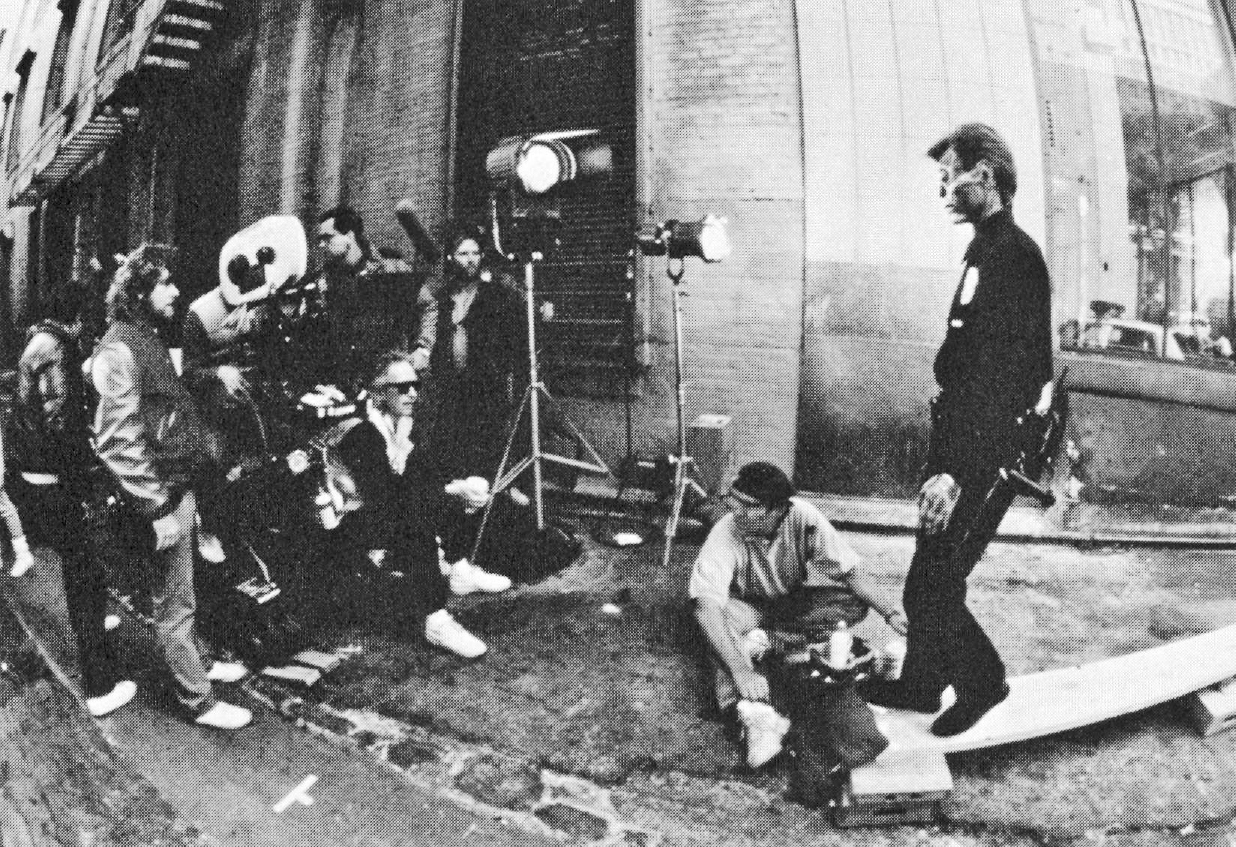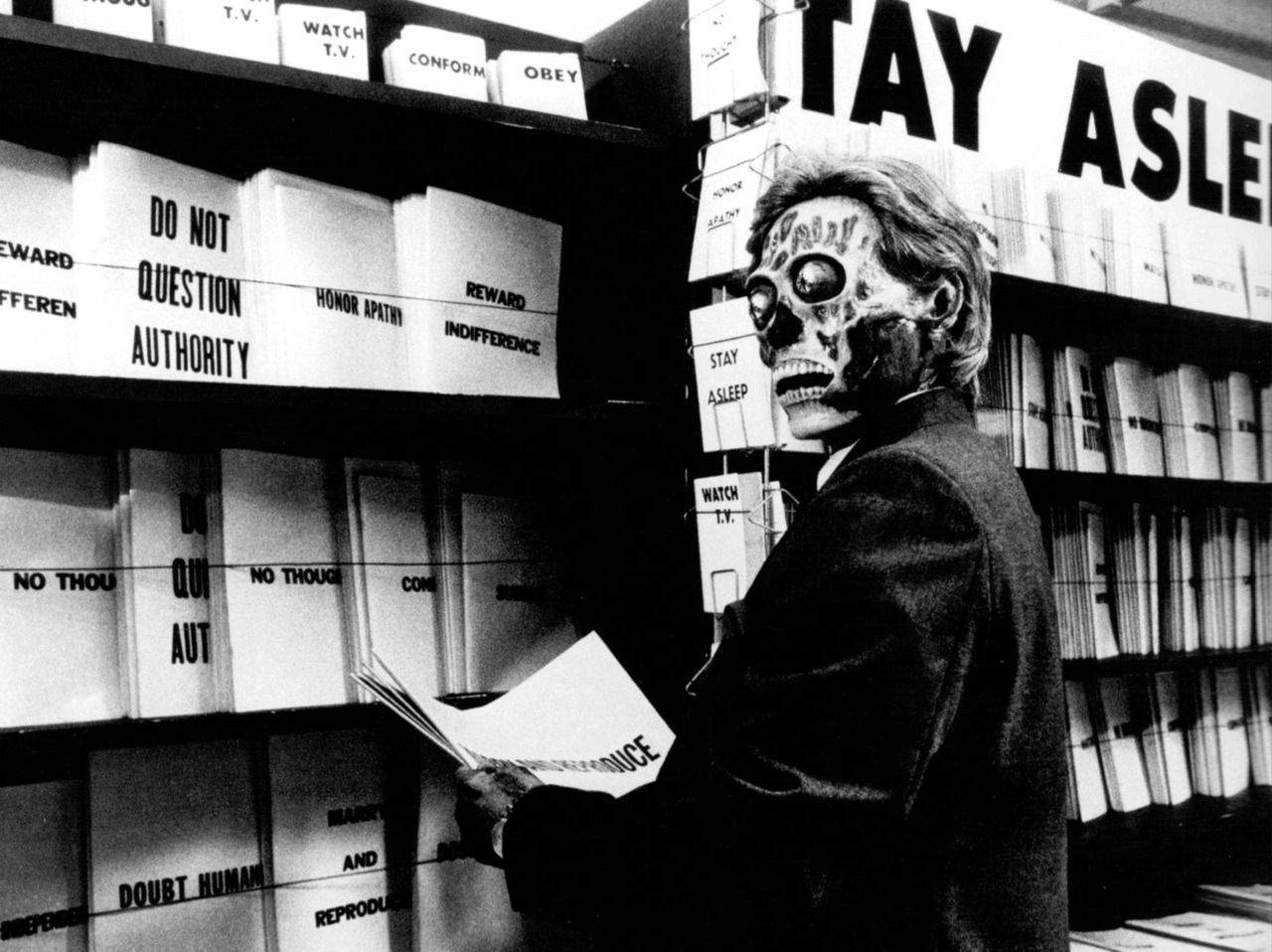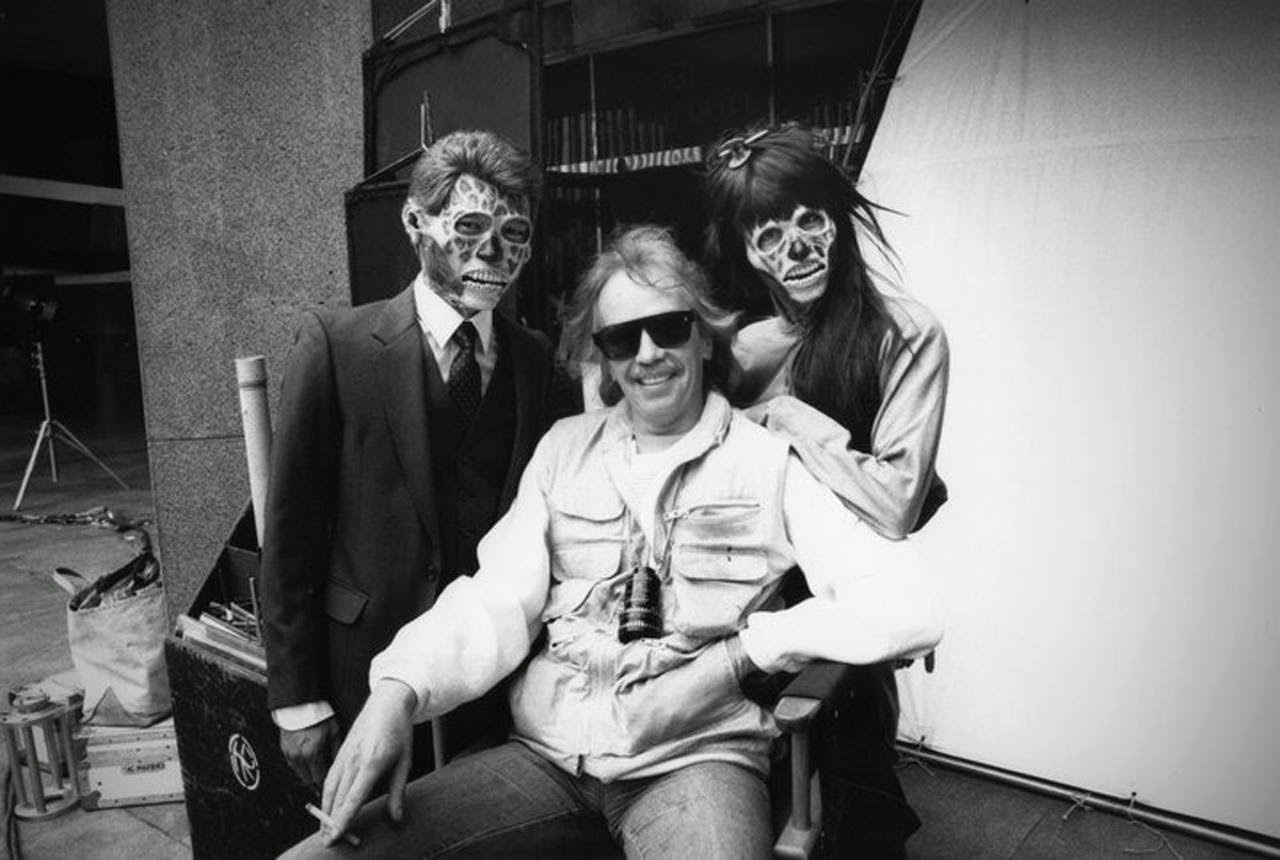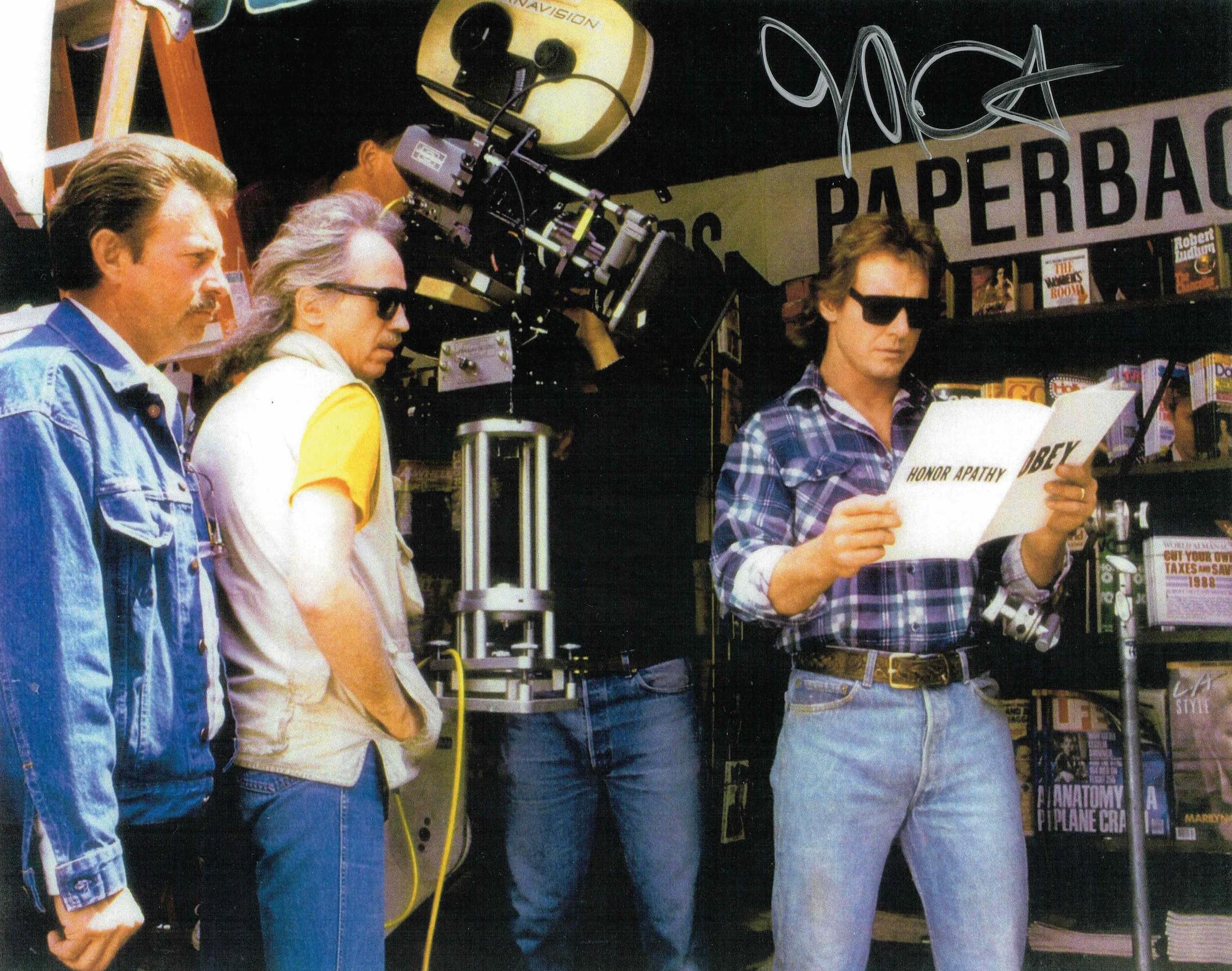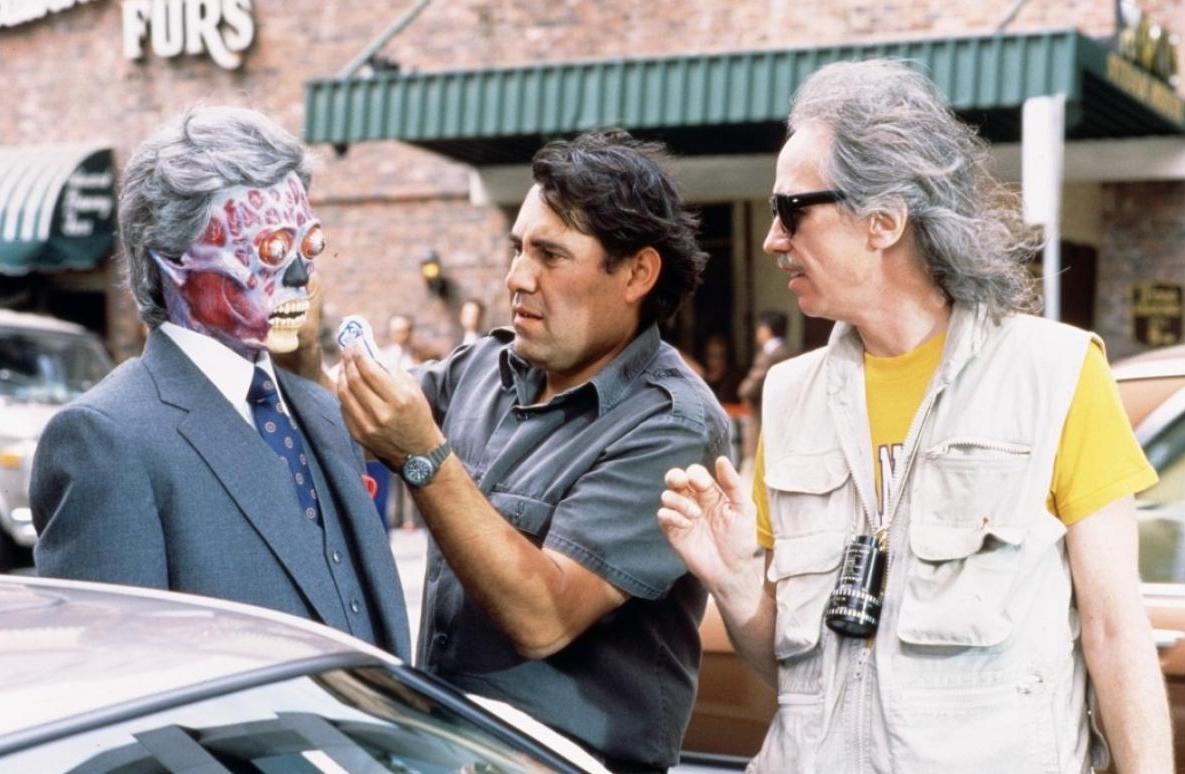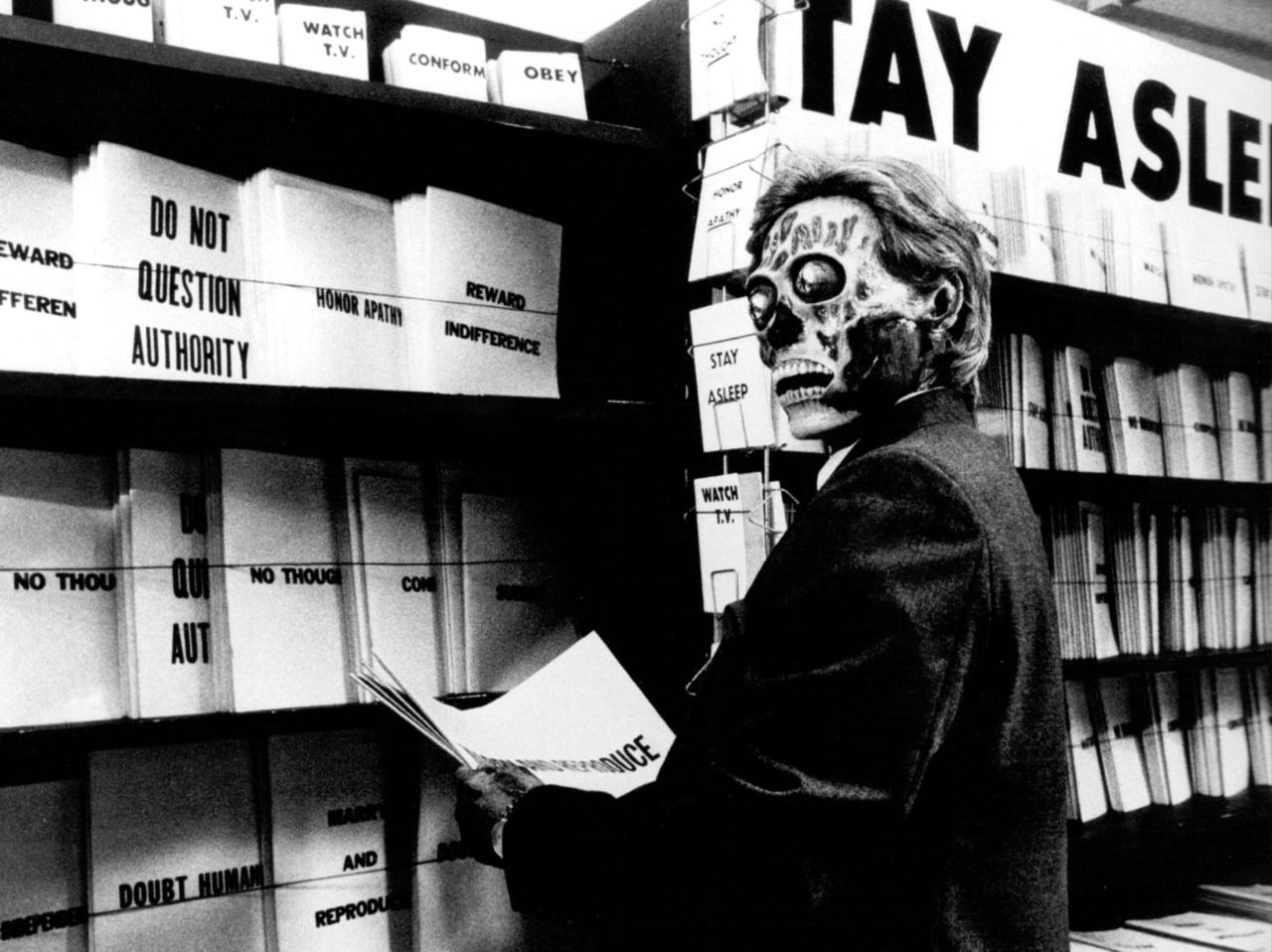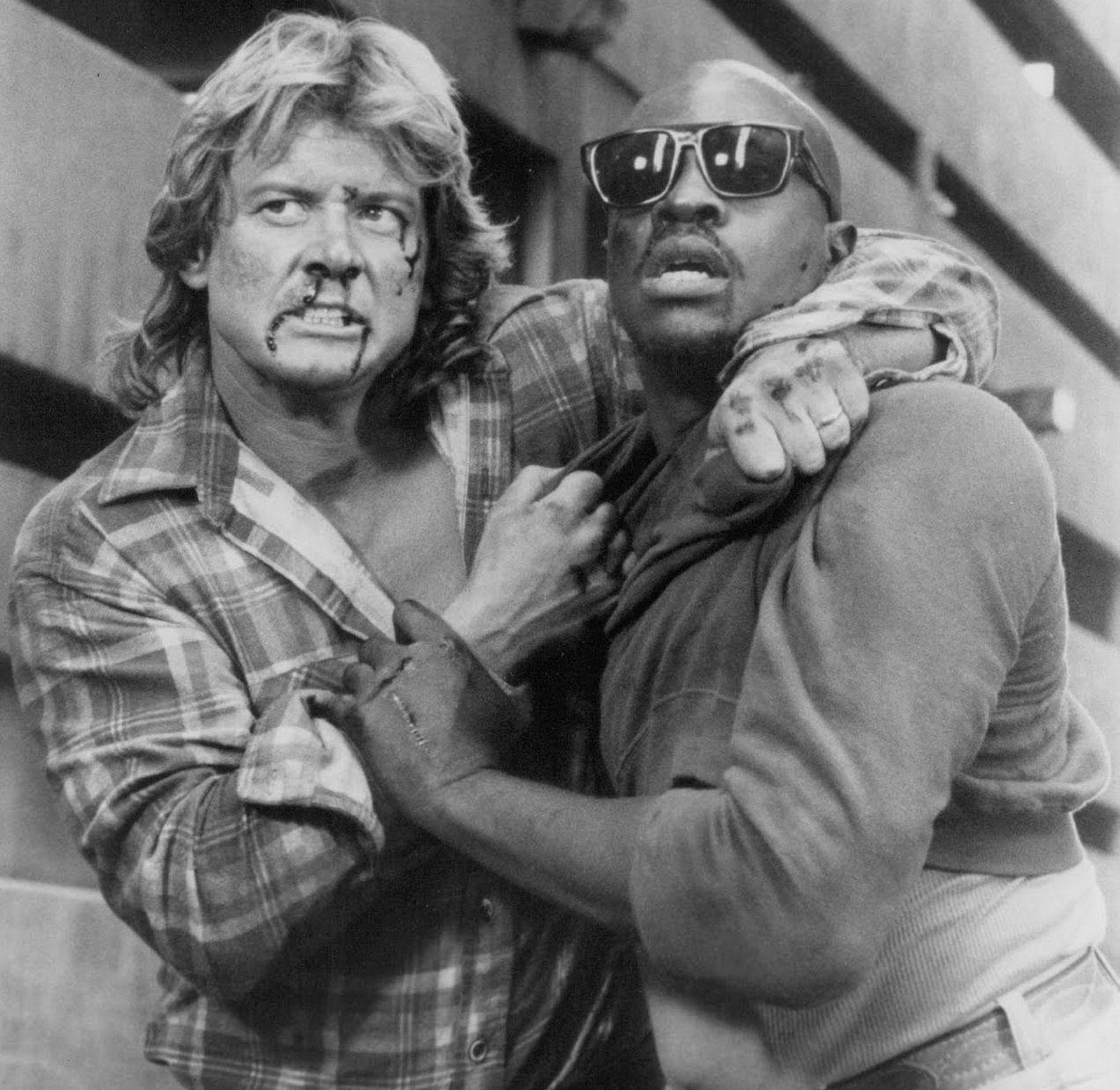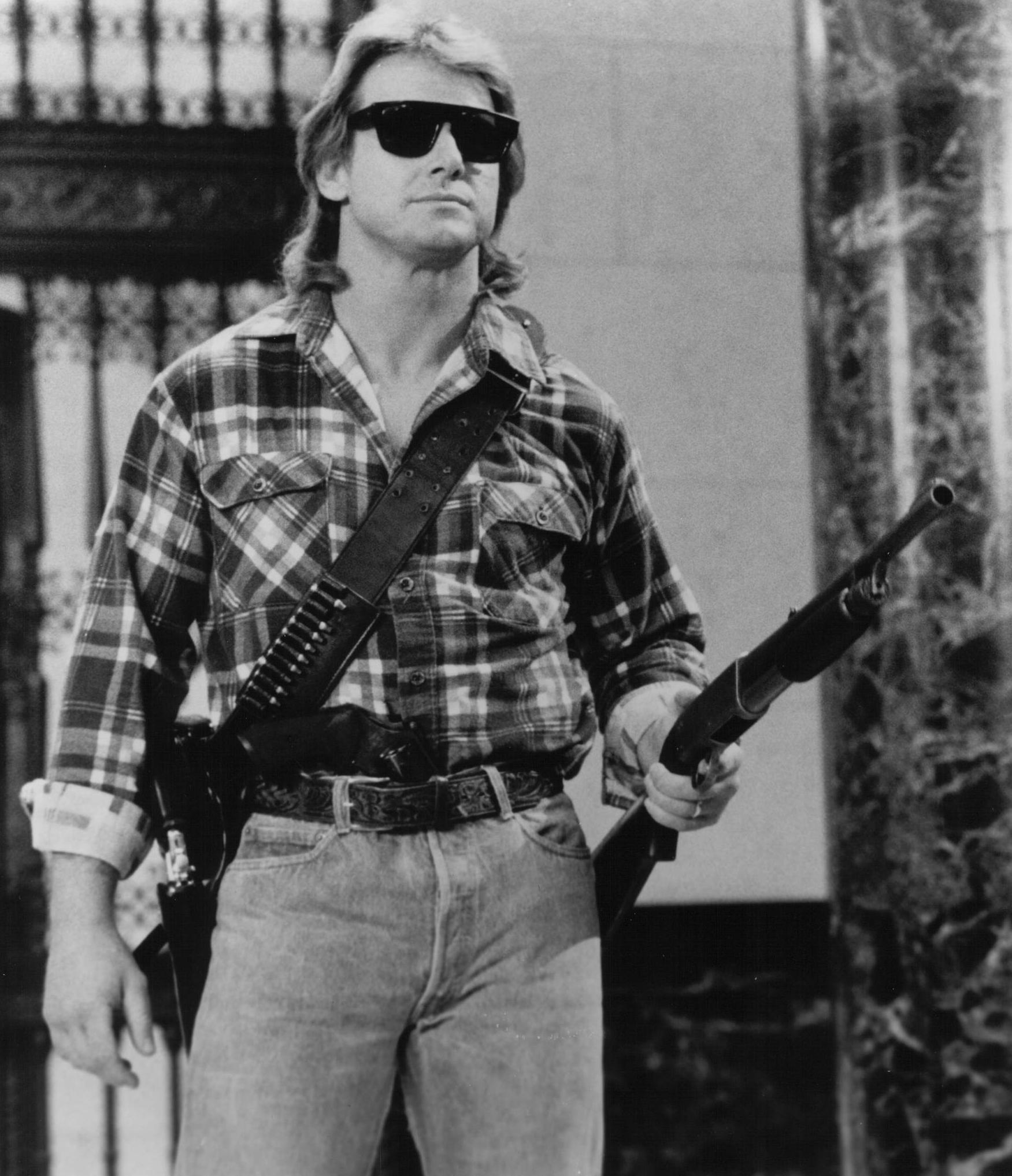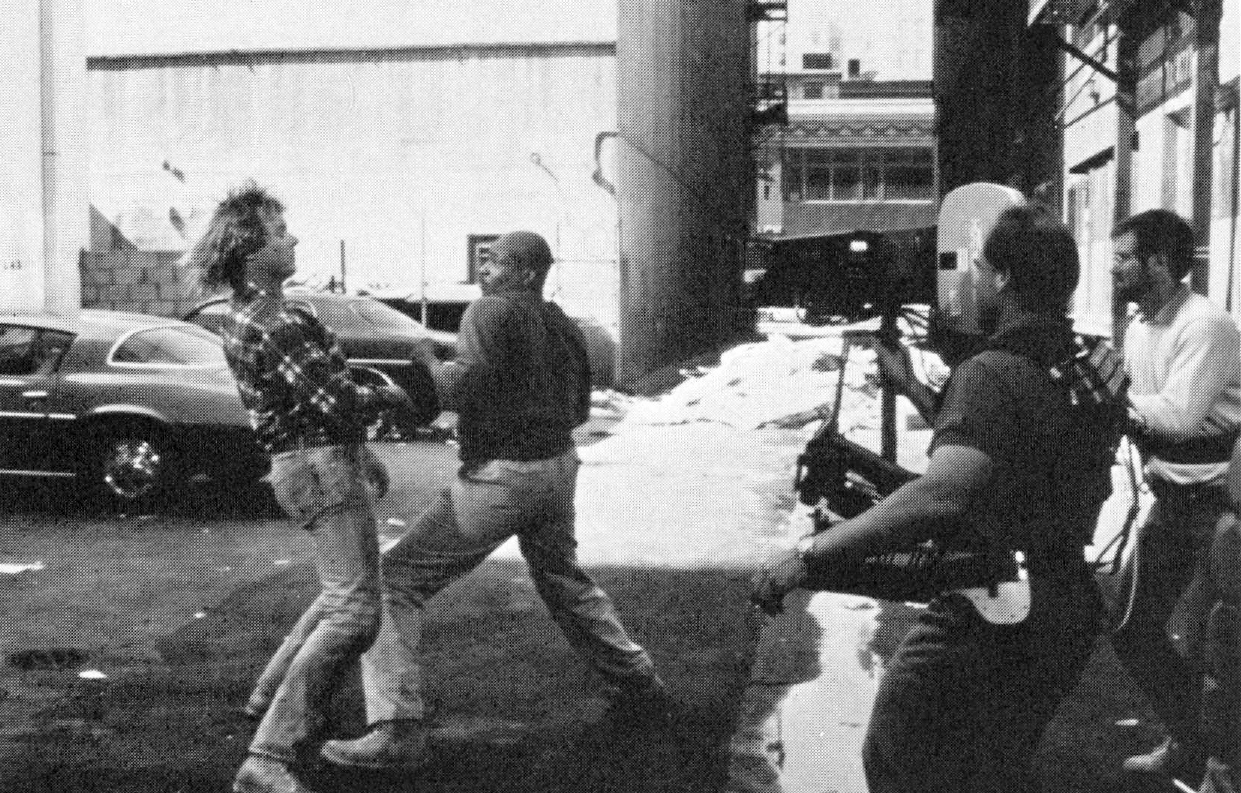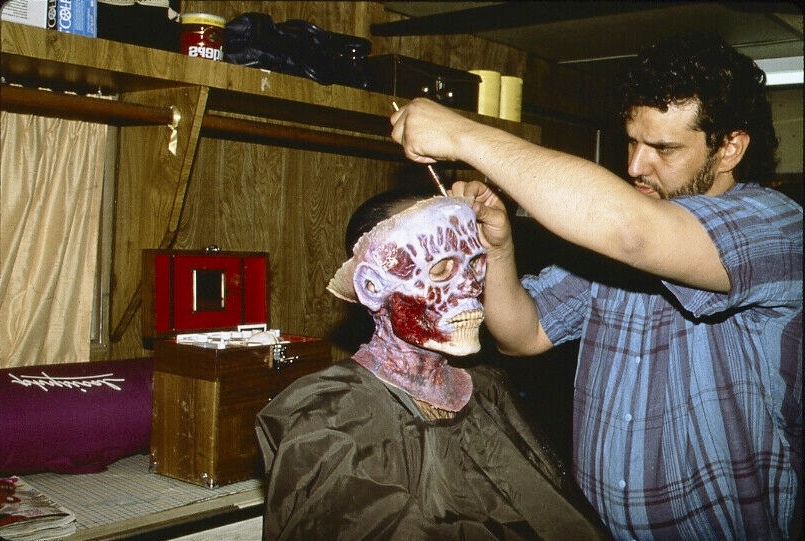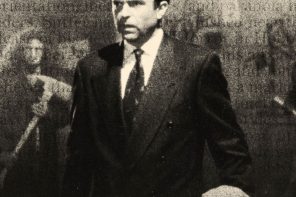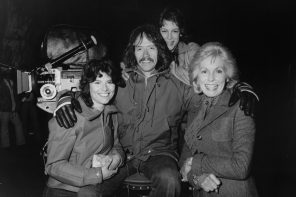By Sven Mikulec
During the 1980s, John Carpenter stumbled upon a comic book based on Ray Nelson’s 1963 short story entitled Eight O’Clock in the Morning. Enraged by what he saw in Ronald Reagan’s America, the filmmaker saw the story as a suitable premise for a cautioning science-fiction action thriller that the world would get to know in 1988 under the sinister name They Live. A thrilling, funnily written SF action flick was dressed in the garments of a B-movie, honoring the films Carpenter grew up on, but what was hidden barely beneath its cheesy surface was an ingeniously simple and straightforward but effective subversive film that stands out as one of the most memorable and most influential counterculture movies of the decade.
The premise is as simple as this: an unemployed American everyman comes across a special set of sunglasses that enable him to look at the world and see what it really is: a dollar-ridden circus of mass consumption, advertising and subliminal messaging that condition inert, sleeping citizens to spend money, consume and breed. The society is run by physically disfigured aliens resembling skeletons of human beings, masquerading as yuppies who helm the consumer society of which Los Angeles, the setting of the story, is a living embodiment. Our working class hero decides to alert the rest of the world and punch his way to the truth, but he does it not by coming up with a brilliant, scientific solution or a clever plan. Instead, our ragged hero, played convincingly by wrestler Roddy Piper, of whom Carpenter said he possessed the needed quality of a man who battled life and came up short, forces people around him to try on the glasses and see the truth for themselves, even resolving to fistfighting with his friends to make them open their eyes.
In a poverty-ridden America of homeless people eating out of trash cans and staring at billboards put up by rich white people in impeccable suits up in sunbathed glass towers, Carpenter tried to make a film that would serve as a sort of a wake-up call, timing its premiere just before the American presidential election of 1988. Interestingly enough, just like his compatriots disappointed him by electing George Bush, another Republican candidate, so did They Live’s box office results plummet. The world John Carpenter was a part of didn’t want to receive the blunt message the filmmaker tried to send, but the movie’s legacy started to build, cult audience started to follow and now, twenty-seven years upon release, They Live is not only one of the most interesting pieces of work in Carpenter’s rich career, but also a movie whose message still resonates strongly today, as its subject matter is as vital and contemporary as it was in the eighties.
Written by Carpenter himself (although under the pseudonym of Frank Armitage, his little tribute to Lovecraft and his ‘The Dunwich Horror’), shot by Gary B. Kibbe, with a bluesy soundtrack composed by Carpenter and his reliable partner Alan Howarth, with surprisingly good performances from wrestler Piper and Carpenter’s old collaborator from The Thing, Keith David, They Live is at the same time a very much enjoyable SF action film, a clever and sharp satirical cautioning tale and a dark comedy with several really humorous episodes. It’s also remembered for its epic five-minute-long fistfight between Piper and David’s characters, which could be seen as Carpenter’s desire to profit from Piper’s dominant masculine physique, as a tribute to John Ford’s The Quiet Man and as a simple wish to satisfy the expectations of Piper’s fan base. On the other hand, if we consider the fact that the fight is going on between two friends who are basically on the same side, it wouldn’t be a stretch to at least consider the possibility that Carpenter envisioned the long, exhausting and almost pointless brawl as a vehicle for conveying one of the main points of the film: that we keep on wasting our time and energy fighting among ourselves, when we should simply put on the sunglasses and focus on the real enemies.
A monumentally important screenplay. Screenwriter must-read: John Carpenter’s screenplay for They Live [PDF]. (NOTE: For educational and research purposes only). The DVD/Blu-ray of the film is available at Shout! Factory and other online retailers (4K Ultra HD and Blu-ray). Absolutely our highest recommendation.
 Loading...
Loading...
John Carpenter on reviving They Live. Courtesy of the Nerdist’s Luke Y. Thompson.
It occurs to us that if you were doing They Live today, the aliens are actually too subtle. Nowadays, they’d have their own network and their own pundits blatantly advocating for what they were doing.
You might be right about that. You might be right. It is true.If you were making a movie of this sort again, do you think there would be a lot of changes to their approach?
If I were going to make that movie today, and it hadn’t been made, I would update it—I would bring it into the new century and change some of the tenor of it, but no—the basic narrative would remain exactly the same.Has Shepard Fairey [the guerilla artist known for his “Obey” images of Andre the Giant and Obama “Hope” poster] ever thanked you for basically inspiring his entire career with this movie?
No, not really, but that’s okay. That’s all right.It’s interesting that with the “Hope” image, he was using the imagery but giving it an opposite meaning.
A touch, yeah. But that’s okay; that’s really good. I like it.I remember when I first saw this movie, thinking that this was the sort of role John Carpenter would normally cast Kurt Russell in. Was there ever any thought of that, or was it always Roddy Piper?
No, you see, in this particular case, what I really needed was an everyman. I needed a working-poor guy who was not upper-middle class, he was not middle class; he was somebody almost down and out. And Roddy was perfect for that; just absolutely perfect, so I never thought of anybody else, really.You met with him at WrestleMania III. Were you specifically looking to cast him at that point, or were you just meeting him?
I just met him there. I went as a fan; a wrestling fan. His manager at the time, David Wolfe, got a hold of me and said, “You wanna meet Roddy and think about this movie?” I said, well, sure. So I met him, and he was a really nice guy. We hit it off well, you know, I had been a wrestling fan since I was a kid, so we had much to talk about, and Roddy was trying to make a move out of wrestling, trying to get into acting. So I agreed to meet him and he was very nice, and we just went from there.Are you still a big wrestling fan?
Not so much anymore. They gave up one of the key elements of wrestling, at least from the days that I knew it, was something called “kayfabe” [the pretense that everything in pro-wrestling is real], which is essentially… well, if you know the word, you know what it is.Yes.
It’s really a lifestyle, as Roddy described it to me; it’s a way of living. Since then—I needed that, to enjoy it, to really enjoy it, I needed that 10%. That was kind of taken away.It’s interesting, there’s almost a parallel there with the plot of this movie. Nowadays, everyone has the sunglasses, and they see that it’s a show.
Yeah, but it’s an awesome show! When I was young, I figured out what was going on, but I really loved it anyway. So there was no disillusionment or shock about it. Whereas with They Live, it would be a big f***ing deal to find all this out!Would you ever work with Roddy again? It seems like you guys have such great chemistry on the commentary track that it sort of makes me wonder why you haven’t gotten together and done more.
If the part is right, I’d love to work with him again. I had a great time. But it’s always about the part, and what can we do together, not just to work for the work’s sake.The fight scene in this movie is pretty epic between him and Keith David; did his wrestling training come into play? Did he ever tell Keith to really hit him a little bit and do a little bit more full contact, or were there still rules about that, that you couldn’t incorporate anything of that sort?
He sure came in handy! It’s an obvious asset for Roddy, and they rehearsed that fight for essentially a month and a half—roughly a month and a half. By the end, they were so conversant in the fight, they knew it inside and out, they were making contact with each other, like you said. They were hitting each other. But since they knew the fight, there was no injury whatsoever. Yeah, I’m proud of the fight. I like the fight a lot.That’s certainly one of the things that people talk about the most. One of the others would of course be the bubblegum line. How did that one come about? Was that in the original script?
It was in the original script, but it all belongs to Roddy, I have to give him complete credit for it. He had a notebook with him in which he would think up one-liners for his matches. And you know part of wrestling is the interview.Yeah.
So his character, his “Rowdy Piper” character, would taunt and insult and so forth, so he’d take a notebook with him, and he’d write the things he would think up. One of them was “I’ve come here to chew bubblegum and kick ass, and I’m all out of bubblegum.” There were others in there too, but that was the one that really jumped out. I believe that one was for, if I remember right, Playboy Buddy Rose.Is it true that there were a couple of repurposed Ghostbusters props in They Live?
I think so. Not that I was particularly aware of at the time, mind you, but I’ve looked at this one prop that these two policemen who were supposedly creatures had, and thought, wait a minute. That looks REAL familiar to me. So yeah, I believe there were.Was it the same special effects house?
Naw, it was low-budget, dude! I’d just rent it out. We couldn’t afford to make ’em.You wouldn’t be able to shoot downtown on a low budget nowadays.
Well, we had a few tricks up our sleeves; we were able to pull it off. That was all legit.Tell me a little bit about the source material for the movie.
This was back in the ’80s, and I’d embarked on this making-low-budget-films again situation. I had scoured some comic books—I’d always loved comics—and there was, I can’t remember the name of the comic title now, but I read this comic based on [the short story] “Eight O’Clock in the Morning” by Ray Nelson; this kinda came before I had fully figured out my story, and I was still in the beginning stages, figuring it out, and it was a really neat little hidden-reality story, essentially. In his version, humanity was hypnotized, almost as if you go up on stage and see a stage hypnotist, and I thought, ehh, that’s kinda corny, so I changed it to a radio frequency to disguise real reality. But I thought, well, this is close enough—I’m gonna use his story.And you used a Lovecraft-inspired pseudonym [Frank Armitage, a character from The Dunwich Horror].
Oh yeah, just because I love Lovecraft. No reason.
THE MAKING OF ‘THEY LIVE’
Eight-minute EPK special features John Carpenter discussing his film They Live. Roddy Piper, Keith David and Meg Foster are also interviewed here as every discusses what they’re expecting out of the movie and what exactly they’re bringing to it. These old “making of” featurettes were probably overlooked back when they were released but today they’re interesting to watch just to see how the movie is being sold. Carpenter starts off talking about the connection that all of his movies have and then he talks about various parts of the picture including the now infamous fight. Both Piper and David talk about filming the fight scene and it’s clear that this here is something that they were really selling the movie on. (source: IMDb)
“Legendary director John Carpenter and Roddy Piper reunite to talk about one of the greatest Sci-Fi films of all time, They Live. Fans of the cult classic are in for a treat as the two reveal behind-the-scenes stories on the making of the film. Plus we’ll find out what ever happened to the They Live TV show, will there ever be a sequel, would John allow a remake and why the film is considered by both Carpenter and Piper to be modern-day a documentary.” —Piper’s Pit
“On this special episode of The Projection Booth, we’re giving you a choice: either put on the podcast, or start eating a trash can. Yes, we’re talking about John Carpenter’s They Live (1988) wherein a man with no name—or a name that means nothing —Nada (“Rowdy” Roddy Piper) comes to Los Angeles looking for work only to find a vast conspiracy instead. We talk to the author of the They Live Cultography, D. Harlan Wilson, as well as producer Sandy King, and actors Peter Jason and Keith David.” —Special Report: They Live
GARY B. KIBBE
Director John Carpenter and cinematographer Gary B. Kibbe deliver a two-fisted sci-fi satire on contemporary consumerism and greed. —From Outer Space, They Live
MARTIN SCORSESE REVIEWS JOHN CARPENTER’S ‘THEY LIVE’
John Carpenter is a filmmaker who is unashamed to stay within the genres he loves (horror and science fiction) and who practices his trade like a master craftsman. His pictures always have a handmade quality—every cut, every move, every choice of framing and camera movement, not to mention every note of music (he composes his own scores) feels like it has been composed or placed by the filmmaker himself. His sense of composition (nearly all of his pictures are shot in Scope) is quite exacting and precise, and his control of movement inside and outside the frame can be hair-raising. There are so many moments in his films that are absolutely startling—the murder of the little girl with the ice-cream cone in Assault on Precinct 13; the appearances of Michael Myers on the very edge of the frame in Halloween; the appearances of the creature in his truly terrifying remake of The Thing. And the mood of his pictures is so carefully crafted and sustained. I’m a great admirer of The Fog, the mood of it, the sense of mystery. But I also love They Live, in which an alien invasion of America is uncovered by people living on the ragged edge of society in Los Angeles.
This movie was Carpenter’s commentary on what he saw as the excesses of the Reagan era, and the movie shares many qualities with pictures made during the Depression, such as Heroes for Sale and Wild Boys of the Road. It’s lyrical and tough at the same time, with a strong sense of community among the displaced people living in makeshift homes on the outskirts of L.A. (interestingly, the picture dovetails with Mel Brooks’ comedy Life Stinks, made a couple of years later), and the mood is unusually sad and bitter. The science-fiction element reveals itself as the story goes on: The “beautiful people” on TV and walking down Rodeo Drive are actually aliens, transmitting subliminal messages to the hypnotized masses, their true images visible through special glasses that are being handed out at a mission for the poor. I like the humor of the picture, the hilariously long fight scene between “Rowdy” Roddy Piper and Keith David, and the sense of outrage. They Live is one of the best films of a fine American director. —Martin Scorsese
Keith David reflects on starring in one of the movie’s longest fight scenes, working with Rowdy Roddy Piper, and more. Plus, producer Larry Franco shares his memories.
‘BIG JOHN’
In France, I’m an auteur; in Germany, a filmmaker; in Britain, a genre film director; and in the USA, a bum. These are the famous words of John Carpenter, one of the most influential horror film directors of all time, whose works such as Halloween, The Thing, The Fog and In the Mouth of Madness remain an inescapable part of every horror film encyclopedia. A talented filmmaker, a modest, humble and practical man, and, for this occasion equally important, a disarmingly, refreshingly honest interviewee. It was from France, to go back to the quote we started with, that the idea for this rare documentary came to life. In 2006 filmmaker Julien Dunand made a documentary film simply called Big John, a 75-minute exploration of Carpenter’s career, character and American film industry in general. The film lacks clips from Carpenter’s movies, most likely due to budgetary issues, but more than makes up for it with a series of enlightening interviews with both Carpenter himself (mostly filmed behind the wheel while driving around L.A.) and a whole gallery of his frequent collaborators, such as producing partner Debra Hill, the Assault on Precinct 13 star Austin Stoker, actress and ex-wife Adrienne Barbeau, the Christine protagonist Keith Gordon, Carpenter’s composing collaborator Alan Howarth, who also did the music for the documentary, and many others. The central value of this film, which is obviously made with a lot of love and respect both for Carpenter and the craft, lies in the one-on-one conversations between Dunand and Carpenter, which give insight into the life and work of a filmmaker whose golden days may be long gone, but whose significance for the art of film can’t be diminished. As on many other occasions, Carpenter leaves the impression of a sympathetic, straightforward fellow who feels he just happened to be in the right place at the right time. “Many of my film school colleagues were more talented than me,” he told us a couple of years back, “so you mustn’t underestimate the importance of sheer luck.” That may be the case, but through a career spanning four decades and eighteen movies, obvious talent and hard work was what kept him at the top.
Here are several photos taken behind-the-scenes during production of John Carpenter’s They Live. Photographed by Sidney Ray Baldwin & Bruce Birmelin © Alive Films, Larry Franco Productions. Intended for editorial use only. All material for educational and noncommercial purposes only.
If you find Cinephilia & Beyond useful and inspiring, please consider making a small donation. Your generosity preserves film knowledge for future generations. To donate, please visit our donation page, or donate directly below:


